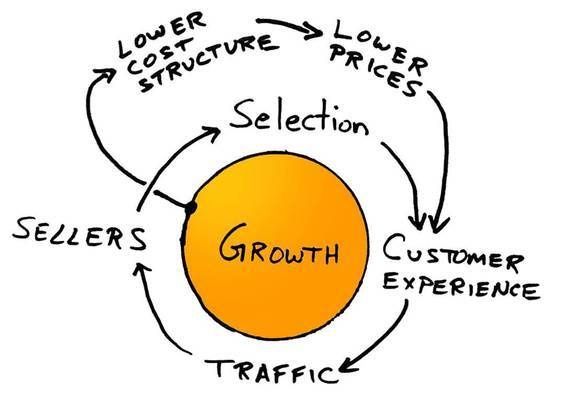Strategy — Think Different
November 27, 2019
An adequate summary of Michael Porter’s ‘What is Strategy?’ so you don’t have to pay $8.95. All errors and omissions are mine entirely. All good stuff is down to Michael Porter.
Michael Porter’s idea of strategy is summed up by the legendary Apple ad: Think Different.
Strategic Positioning
All differences in competitive advantage between companies stem from differences in the activities each company prioritises. Operational effectiveness is providing the same activities as your competitors, but executing them better. Applying off-the-shelf systems like Lean-Six-Sigma can provide dramatic operational improvements, but they do not lead to sustainable competitive advantages on their own. Solely focusing on “best practices” encourages a race-to-the-bottom between competitors which eats away industry profitability.
The first step to thinking different is to think. Off-the-shelf systems outsource your thinking, allowing leadership to avoid forming a strategy.
In contrast to operational effectiveness, strategic positioning means deliberately choosing to perform different activities from rivals. Operational effectiveness is about going from 1-to-n, while strategic positioning is about going from zero-to-one. Strategy is thinking different.
Porter says there are 3 broad origins of strategic position. The first he calls variety-based positioning — serving few needs of many customers. This “long tail” of customers is the source of competitive advantage for most tech companies, from Netflix (I want to watch a movie) to Google (I want to find information). The second is needs-based positioning — serving broad needs of a particular customer segment. This is best illustrated with live-in nannies, and “boutique” businesses which cater exclusively to rich clients. The third is access-based positioning — serving broad customer needs in a narrow market, for example, customers who live in rural areas or speak a foreign language.
There is no perfect strategy, only perfect strategies. Strategy lies on a multi-dimensional landscape with many profitable hills and unprofitable valleys. For most companies, some hills are easier to climb than others.
Tradeoffs
On its own, a differentiated approach is not enough to guarantee a sustainable competitive advantage. The approach has to be hard to copy. There have to be tradeoffs with other positions. For example, Neutrogena, the soap company, markets more like a drug than a deodorant. They promote heavily to dermatologists and focus on pharmacies, eschewing traditional supermarket retailers which sell soap in high volumes. Giving up supermarket sales makes Neutrogena hard to copy.
For companies who want to change their strategic position, tradeoffs arise for 3 reasons. The first is inconsistencies in branding. Companies cannot be all things to all people. The second reason is that different positions require different product mix, employee behaviour, and even management system. All stable systems are resistant to change, and companies are no exception. Finally, there are limits on internal coordination — choosing to compete in one way sends a clear message to employees across the organisation. Sending mixed signals is confusing and inefficient.
As Steve Jobs says, strategy is about saying no. It means saying no to the hundred other good ideas that there are. You have to pick carefully. I’m actually as proud of the things we haven’t done as the things I have done. Innovation is saying no to 1,000 things.
Like the essence of a mental model is in choosing what to ignore, the essence of strategy is in choosing what not to do.
Fit
While operational excellence is about executing individual activities well, strategy is about how well activities fit together.
Take Southwest Airlines in the mid-90s. It offered low-cost, predictable airline service. Crucial to this was rapid gate turnaround, which enabled frequent departures and greater use of aircraft. This was performed by well-paid gate crews with flexible union laws. But it was made easier by Southwest’s other activities. With no meals, no seat assignment, and standardised aircraft fleet, Southwest oriented its entire approach around low cost and predictable service. All its activities fit together. Competitors couldn’t benefit from copying one unless they copied them all.
There are 2 types of fit. First-order fit comes from simple consistency between each activity and the overall strategy. For example, Vanguard align all their activities with a low-cost strategy, including employee bonuses. Second-order fit occurs when activities are mutually reinforcing: they have a flywheel effect. For example, Amazon has a low cost structure, which allows them to offer low prices, which gives a better customer experience, which drives more traffic, which attracts more sellers, which provides a better customer experience.

Reproduced from Amazon
What Is Strategy?
To create good strategy, think about broad themes which persist across many company activities. Choosing a long time-horizon helps, because it forces you to avoid short-term fads. For example, Bezos orients Amazon’s strategy around two customer trends he thinks won’t change: Desire for lower prices, and faster delivery.
It is better to deepen a strategic position — to commit to a differentiated approach — than to broaden it. Being all things to all people means you’ll sell no things to no people.
As Porter says: The strategic agenda requires discipline and continuity, its enemies are distraction and compromise.
So, what is strategy?
According to Michael Porter, it is creating fit among a company’s activities to attain differentiated competitive advantage. But this assumes you are already in an ideal market. I would go further. Strategy is choosing which markets to participate in, and creating fit among activities to attain a sustainable competitive advantage. Strategy is working out where to play, and how to win.